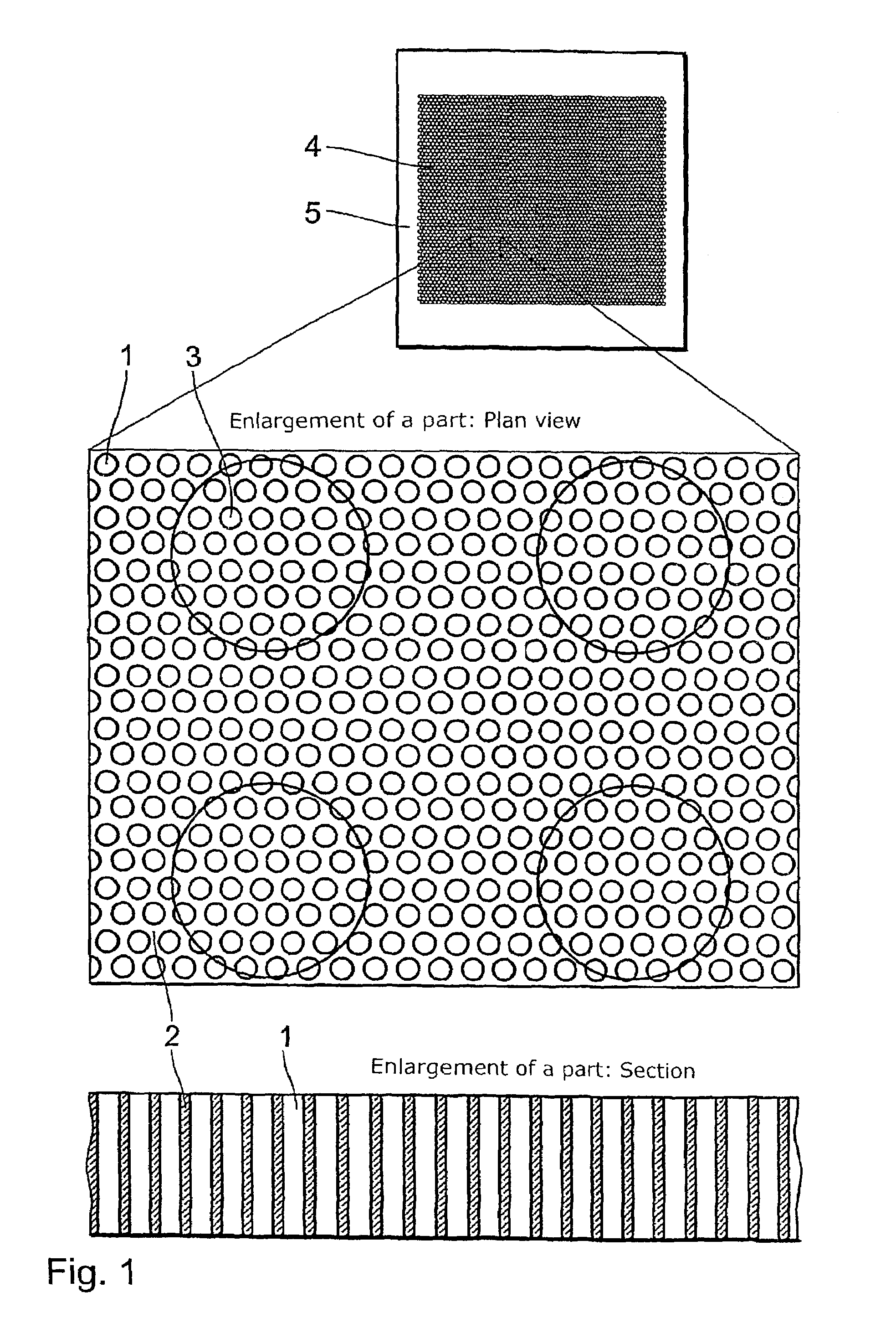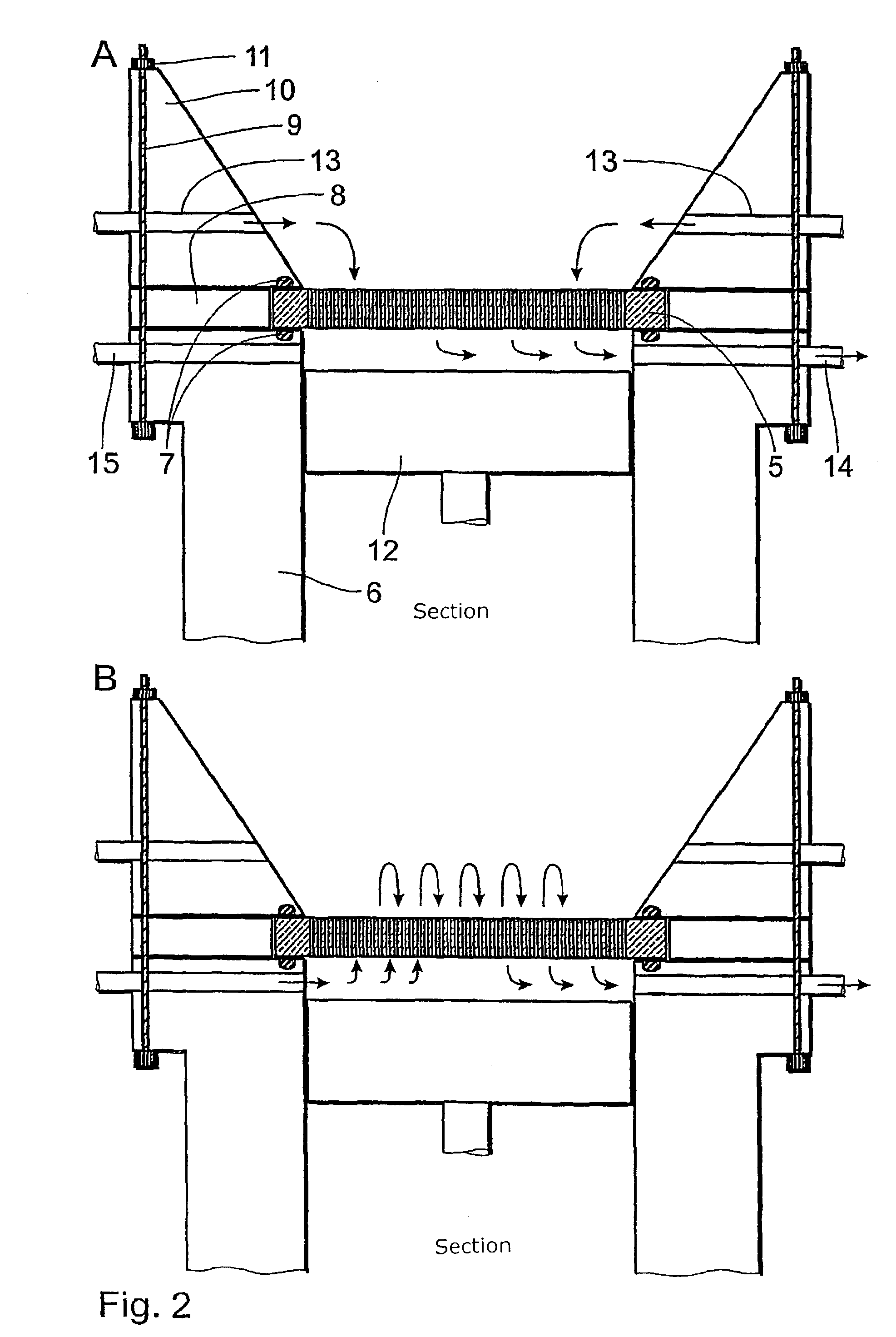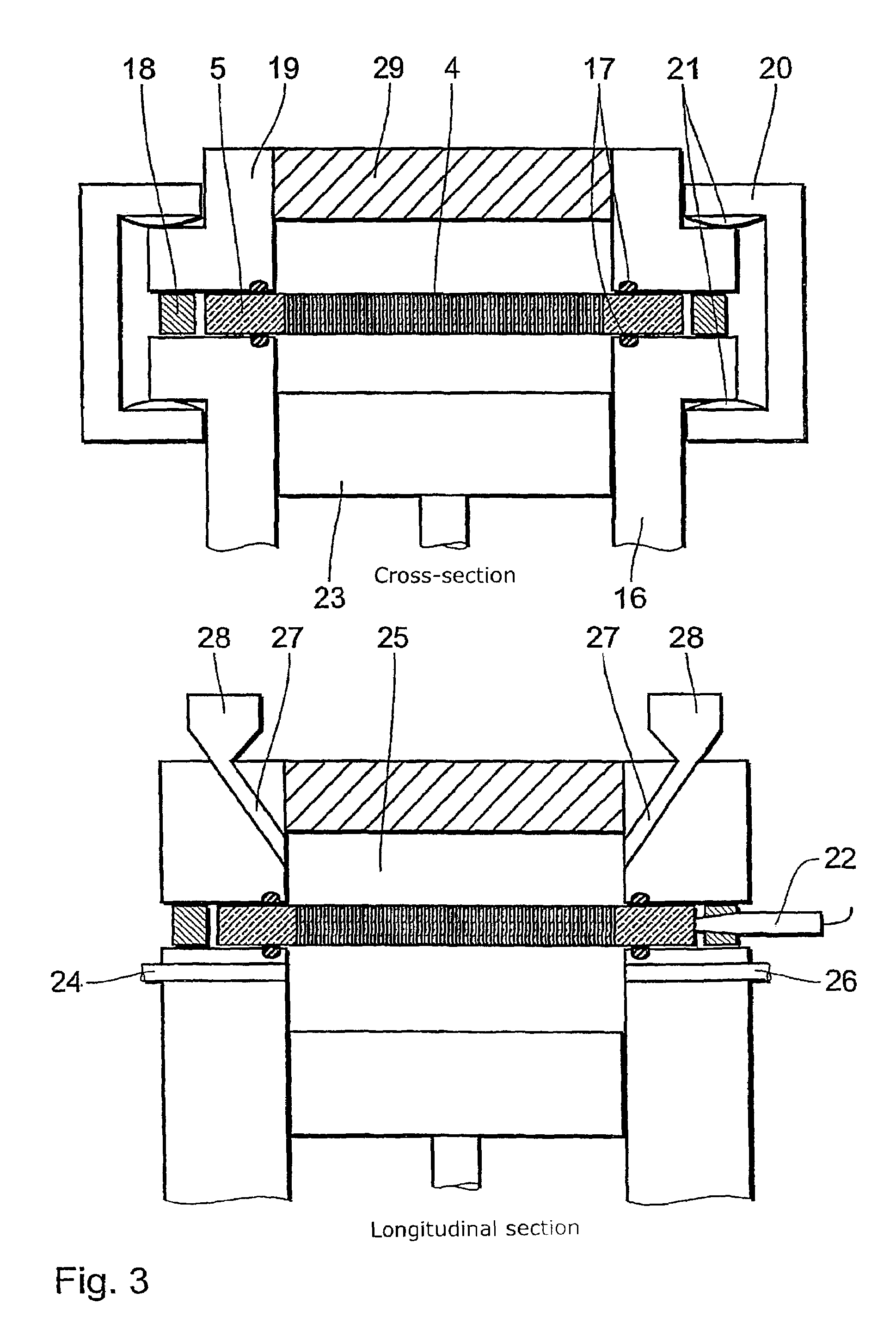Method and device for investigating substance libraries
a substance library and library technology, applied in the field of methods and devices for investigating substance libraries, can solve the problem that the solid phase available for binding is limited to the external surface of the support, and achieve the effect of improving the stability and stability of the suppor
- Summary
- Abstract
- Description
- Claims
- Application Information
AI Technical Summary
Benefits of technology
Problems solved by technology
Method used
Image
Examples
Embodiment Construction
of the Solution According to the Invention in a Preferred Embodiment
[0024]The way in which the entire capillary plate is pre-treated is now described. The sample areas are then produced and the substances synthesised thereon. An automatic device is described for all procedures to which the capillary plate is completely exposed, such as for example washing. That device is combined with a pipetting robot so that the capillary plate can be washed and protection removed therefrom in the same device, and the individual synthesis steps can be implemented therein. A further device is described for investigating the binding of an active substance to the substance library, the capillary plate being fitted into the further device and brought into contact with the active substance. Optical detection of the binding effect is carried out at the same time herein.
Derivatisation of the Capillary Plate for Receiving the Substance Library
[0025]The capillary plate is produced by etching from homogeneo...
PUM
| Property | Measurement | Unit |
|---|---|---|
| Thickness | aaaaa | aaaaa |
| Thickness | aaaaa | aaaaa |
| Diameter | aaaaa | aaaaa |
Abstract
Description
Claims
Application Information
 Login to View More
Login to View More - R&D
- Intellectual Property
- Life Sciences
- Materials
- Tech Scout
- Unparalleled Data Quality
- Higher Quality Content
- 60% Fewer Hallucinations
Browse by: Latest US Patents, China's latest patents, Technical Efficacy Thesaurus, Application Domain, Technology Topic, Popular Technical Reports.
© 2025 PatSnap. All rights reserved.Legal|Privacy policy|Modern Slavery Act Transparency Statement|Sitemap|About US| Contact US: help@patsnap.com



